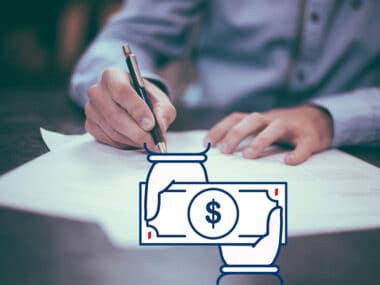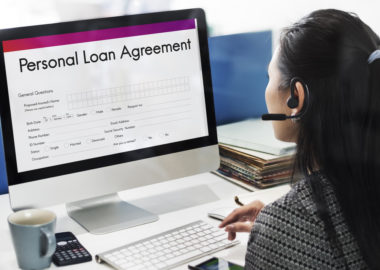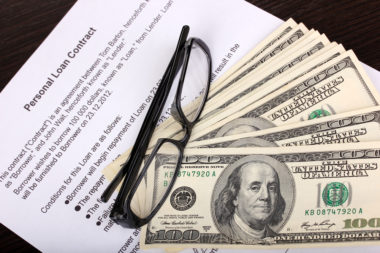When applying for a loan, you almost always have to provide proof of income. This is so the loan servicer can determine how long it will take you to pay the loan back, as well as assess the risk level they’re taking on by lending to you. The question becomes, what do you do if you don’t have proof of income, but still need a loan?
This is where no-income loans come in. No-income loans were designed for people without traditional proof of income, such as pay stubs or bank account records. However, you will still need to provide the lender something that will establish your ability to pay back the loan, and you should expect higher APRs.
No-income loans can be tricky depending on your situation, so it’s prudent to be informed about all your options and the application process before applying.
Table of Contents
What Is a No-Income Loan?
A no-income loan is a loan that doesn’t require income verification. It’s important to note that these loans aren’t zero income, or “free,” loans, meaning you will still have to meet lender requirements.
For no-income loans, this typically means a credit inquiry and proof of some alternative income that will help you repay the loan. Alternative income could include, but is not limited to:
- Liquid assets;
- Real-estate collateral;
- Vehicles;
- Unemployment benefits;
- Social Security or disability checks;
- Veterans Administration (VA) benefits;
- Retirement accounts;
- Alimony;
- Child support;
- A job offer with a signed acceptance letter.
Unexpected or emergency situations that require you to have a larger amount of money on hand, such as a medical emergency, may prompt someone to apply for a no-income loan.
Types of No-Income Loans
There are three types of no-income loans currently used by lenders. The type of no-income loan you qualify for will depend on the type of income or assets you provide the lender. The no-income loan types are:
- Stated income, verified assets (SIVA): This type of no-income loan is when the borrower has provided proof of some income as well as verified assets as collateral to get the loan approved. This is one of the less-risky no-income loans for lenders and therefore may have a lower interest rate than other no-income loans.
- No-income, verified assets (NIVA): This type of no-income loan is supported mostly or completely by the borrower’s assets. The assets must be placed up as collateral for the loan, meaning they can be repossessed by the financial institution if you default on the loan.
- No-income, no assets (NINA): These types of no-income loans are typically reserved for borrowers with income streams that are hard to verify or they consistently fluctuate. Real estate investors who make rental income, people who make most of their income in tips or donations, and those who are self-employed may be most likely to be approved for this type of loan.
Alternatives to No-Income Loans
Depending on your situation, there may be alternatives to no-income loans that you can pursue, which may be easier to obtain or come with fewer complications. Some of these alternatives include the following.
Co-Signer Loans
You may not qualify for a typical personal loan, but that doesn’t mean you couldn’t with a co-signer. A co-signer is someone who will be legally responsible for the loan if you, the borrower, are unable to make payments.
Having a co-signer can be a great way to take out less-risky loans or high-fee loans. Your co-signer will need to provide their credit score and proof of income and then be approved by the lender before you can be approved for the loan. Co-signing can also be a big commitment, so make sure you discuss this with your co-signer beforehand.
Debt Consolidation
Debt consolidation is a personal finance strategy that aims to combine outstanding debts into one account. This can help you lower the amount of outstanding debt that appears on your credit report, and leave you with a single monthly payment, rather than several.
This strategy can also help you refinance loans. When you consolidate you have the opportunity to qualify for a new interest rate, which is typically lower and can even be zero in some cases. If you’re interested in debt consolidation, talk to your current lender to see what options are available, as this strategy isn’t available for every loan.
Borrowing From Family
If possible, see if you can borrow the money you need from a family member or close friend. This won’t affect your financial health or history, and you may be able to negotiate more favorable terms for both parties.
If you can borrow from family, you’ll still want to draw up a legally binding document with the agreed-upon terms for all parties to sign. This gives you and your family members a legally binding way to settle disputes on the loan, should they arise.
Disaster Assistance
If your home or business has suffered from a declared disaster, you can apply for a disaster assistance loan. The federal government offers these loans with low interest to help borrowers recover, and typically checks three things — the applicant’s disaster-related losses, credit score, and repayment ability.
You can find out more about disaster assistance from the congressional research service report.
How to Get a No-Income Loan
You can apply for a no-income loan from any financial institution that offers them. Many of these institutions offer online and in-person applications. Before you apply, make sure you have the necessary bank statements, property or vehicle titles, or other verification needed for any assets or accounts.
The lender may further assess any assets you bring to your application to determine what they perceive as the value. This may vary across institutions depending on the asset and lender type.
The type of alternative income that will be accepted and the amount required will also vary from lender to lender, as will minimum credit score requirements. Additionally, you may not be eligible for a no-income loan if you have declared bankruptcy or have other outstanding short-term loans that would further decrease your repayment ability.
Image Source: https://depositphotos.com/





